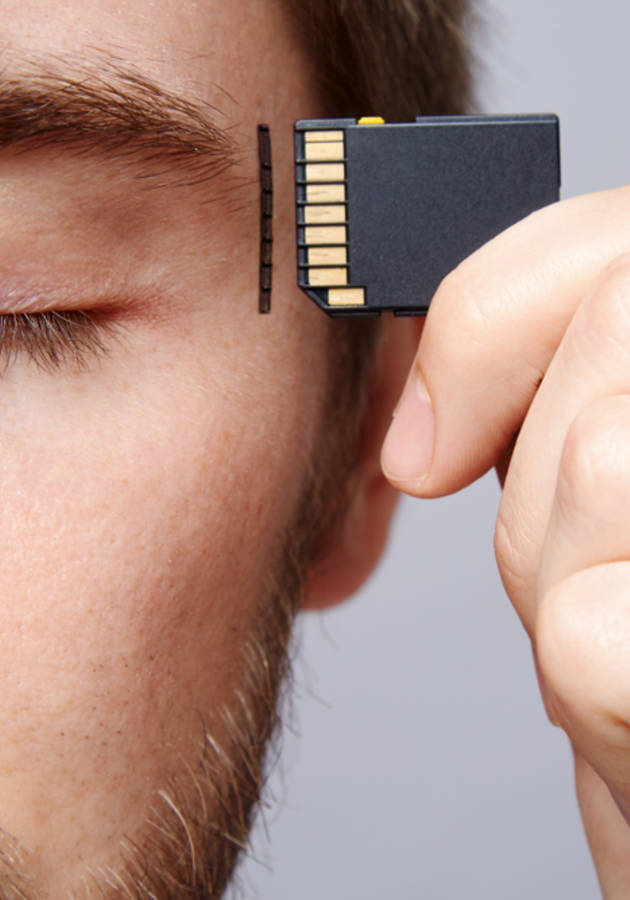Who has never had a bad day? In this work, author Caroline Webb uses discoveries in the area of behavioral science, psychology, and neuroscience to help us overcome or at least reduce the stress and difficulties that generate bad days for many of us. By better understanding brain function and our decision-making process, Webb explains how to apply that knowledge in our day-to-day life to learn how to deal with challenging situations. Do you want to learn how to turn a bad day into a good day? Want to find out how some actions can motivate you and help you work better? Come with us!
Turn a Bad Day Into a Good Day
Most of us can imagine one of those good days at work, where we are at our best. We are full of ideas, we can handle any problem and even get along with that co-worker.
Of course, not every day can be that good. But by following some of the advice here, you'll be able to turn almost every day into at least a good day.
Discover Scientific Advances That Have Changed Everything
Certain advances in science have given us very important insights into how we can create a better day.
Some of these advances are:
Our brain is based on two systems. The brain works in parallel with two opposing systems. The deliberate system is our conscious, slow and rational thinking. The automatic system is the subconscious, fast and instinctive. For example, the deliberate system calculates a tip of 15% while the automatic system makes you run before a car hits you when crossing a street.
Our mind and body are interconnected in ways we cannot understand. For example, we knew that happiness leads us to smile, but we did not know that smiling (regardless of how you feel) will make you happier.
The axis of discovery-defense is another perception. We are constantly moving on an axis, anchored at one end by a defensive perspective, waiting for an attack at any moment. While on the other end, we are anchored by a state of discovery, looking for rewarding experiences.
In addition to the above scientific findings, there are seven important concepts for you to have a good day:
-
Priorities: Defining the intentional direction of your day.
-
Productivity: using your daytime in the best way.
-
Relationships: maintaining productive and positive interactions.
-
Thinking: Making good choices, being creative and smart.
-
Influence: maximizing the impact of what you say or do.
-
Resilience: overcoming obstacles and hassles.
-
Energy: generating enthusiasm and satisfaction.
Define Your Intentions, Organize, And Make Plans
Have you ever caught yourself wishing the end of a day and feeling like it was a total waste? Here are some tips to help you minimize this feeling.
First, make clear your intentions for each day. Try to eliminate any activity you know that hinders you from reaching your goals.
For example, one of the author's clients, Martin, is the Strategic Director of an aircraft manufacturer. He noted that whenever he felt overwhelmed with his daily chores, he ended up doing distracting habits, like checking new sites.
Therefore, to increase your productivity, identify those distracting habits that hinder you, and focus on avoiding them. Keep your eyes on everyday goals.
Second, organize your goals using positive languages. Goals put in this way can also be called positive goal-setting. That is, goals that affirm the positive outcome you want to achieve, such as "making my product irresistible". The opposite would be avoidable goals, such as "stop losing customers".
There is research that advocates the benefits of this strategy. A 1997 study found that students using positive goals setting improved their performance, while others using avoidable goals worsened.
Third, make a plan "then when .." to prepare for obstacles that may appear on the way to your goals.
Notice the author, Caroline Webb, for example. When she set up her own consulting firm and no longer had a boss waiting for her at work at 9 am, she was tempted to sleep and throw away her mornings.
Then she committed to a "then when" plan to overcome this obstacle. "When I wake up, I'll go for a quick walk first, and then I'll check my e-mails. This little rule helped her get out of bed and face her every day in a good mood."
Keep Focused And Organized
Calendars filled with tasks at work make it much easier to feel overwhelmed. Let's think of some ways to handle these situations.
First, the physical. Stand on a couch or office chair for a few minutes. Keep your focus on your breathing until you have calmed down enough to think clearly.
So, to sort out the chaos, make a plan and decide where to start.
First, write down everything you need to do in the coming days or weeks. Mark the most important tasks and take action to complete this task today, no matter the size of it.
Let's observe Angela as a case study. Angela was a lawyer who wanted to run for office at her firm. However, the task of "getting ready for the election" had always seemed very scary. These words gave her anxiety, so she avoided the task and procrastinated.
What eventually worked for her was to separate the task into smaller steps, splitting into things like "having a conversation with my boss about my idea."
After separating the big task into small, manageable steps, "preparation for election" became much less heavy and she was able to deal with the situation.
Another essential prerequisite to focus on is the scheduled breaks at least every one and a half hours.
The focus on the day decreases with the passage of time and needs to be recharged periodically. In 90 minutes, our brains go from highly focused to inattentive. That's why we end up messing around with the cell phone or surfing a social network when we're forced to concentrate longer.
When famous psychologist K. Anders Ericsson studied people at the top of their fields, such as famous guitarists, athletes, and chess players, he discovered that these people also practiced in blocks of 90 minutes or less, with small pauses between blocks.
Improve Your Relationships And Interact Often
Getting along with the people around you is essential to having a better day. Here are some tips on how to improve your relationships.
First, build a relationship when you interact with someone at work. Do not just bump into someone in the office kitchen. Engage in conversations and ask honest questions like "what are you going to do on holiday?".
Find things in common or shared areas of interest, show genuine curiosity about your co-workers and anyone else you meet. Creating this sense of connection is important because it creates a culture of trust and collaboration in the workplace.
Highlighting common interests is also important when you are looking for a job. That is because employers are more likely to hire someone who is similar to them.
We will observe a study conducted by sociologist Lauren Rivera of Northwestern University. She asked the recruiting managers about her latest hires. The finding was that 74% of respondents admitted to having some things in common with new hires, whether based on interests such as sports, technology or something else. That indicates that managers prefer to hire and be close to people who have things in common with them.
To have a good day, it is also important to resolve any tension with your co-workers, as this can put an end to your enthusiasm.
The best way to deal with this is to be open. Explain to your colleague what you are feeling and why. Do this in a polite but firm manner.
For example, Simon is a real estate agent who was bothered by a client who made promises to him but rarely met. Instead of ignoring his frustration, Simon was sincere and communicated what he felt. "I'm confused because I've received positive feedback from you, but we have not kept up with the project. Do you mind telling me what made you dissatisfied and what can I improve next time? "
This approach helped his client understand his feelings without being overwhelmed and defensive. So they ended up having a discussion about what the customer really wanted.
Use a Problems Tree To Help In The Resolution
Do you struggle when making difficult decisions because you feel overwhelmed? The next time you feel this way, try these simple steps:
First, develop a versatile routine that helps you make decisions in all situations.
The routine can be as simple as asking yourself a set of questions like "what are the potential alternatives and drawbacks of that choice?" Or "what would be the worst case and what are my options if that happens?".
Peggy is an advertising art director who has developed a routine that works well for her. The trick is to always invite colleagues to give feedback on your current job. Although she does not always agree with them, feedbacks help her understand the potential issues in her campaigns, thereby improving her decisions.
Remember that good advice can come from anyone, not just from experts. Once Peggy received valuable feedback from someone who worked with customer service. The person had the knowledge and suggested that customers were not understanding the campaign, and Peggy was able to adjust the campaign after that.
Another tip to optimize your problem-solving skills is to break a complex problem into a "problem tree".
Start by noting the central problem. Let's imagine that your business is low profits, so your central problem could be: "How do I improve my profits?"
This question is now the trunk of the tree. Now, write down the two possible options that form the branches of the tree. In that case, they would either increase revenues or reduce costs.
So think of concrete actions that would help you make those choices. For example, you could fire employees to lower costs or launch a new product to increase revenue.
These suggestions can generate more branches in the problem tree until eventually, you have mapped out many possible actions to solve your problem.
Involve Your Public In Your Presentations
Have you ever given a presentation and realized that most people were not listening? To avoid this problem in the future, follow these simple techniques.
First, remember that your audience will be much more receptive if they are involved and feel that they have chosen something to learn with.
For example, Emma organizes training programs on new pedagogical techniques for teachers. In the past, it was difficult to get any participant to deviate from their own old methods. So it was hard to get anyone to listen to her during the training sessions.
So Emma tried a new kind of meeting, where ten teachers present their own methods in different positions at the table. Participants were then free to walk into the room and stop at positions they were interested in.
Emma's strategy gave teachers more freedom regarding what to learn, which made them much more enthusiastic about training.
Second, make your presentation interesting by incorporating videos or posters that grab the public's attention. Make sure you use a whiteboard if you have one available. People will internalize your message if you draw and write in real time instead of just using prepared slides.
An experiment at Stanford University has shown that people remember 9% more of graphics that are created in front of them, compared to the graphics that they see ready in a slide, for example.
And also make sure you fluidly use simple, short phrases to grab the audience's attention. Also, remember to emphasize why your audience should care about what you have to say.
Remind Yourself of Difficulty Problems You Have Already Solved and Be Motivated
It's Monday, you're tired and already waiting for the weekend. But you have a meeting in the morning with an unsatisfied customer. What do you do?
First, keep calm and distance from the situation. Imagine it's not you, but a friend who has to face the customer. What advice would you give him? You can also talk to yourself in second person to gain some distant perspective.
Then think about a past situation that you solved well and ask yourself which features helped you do it. Maybe it was your dexterity, your fear, or your friends who supported you. All this can probably help you too in the current situation.
For example, Jacquie works in the public relations department of a university. Once, an earthquake wiped out the university's energy and water supply. But instead of seeing it as a disaster, Jacquie turned the earthquake into a positive PR story.
The college managed to keep the graduation ceremony in the middle of some destroyed buildings, a story that the national media covered as an example of perseverance and community. Thanks to Jacquie's attitude and her media handling skills.
Thinking about how she handled this situation still helps Jacquie when she faces new problems.
In challenging times, turning a bad situation into positive thoughts is another way to inject some energy and improve your day.
Try some of these tricks next time you're in a complicated situation. Begin by identifying mental, physical, and temporal patterns and how they affect your energy. For example, you may always feel lethargic after lunch.
Then find out how to increase your energy in these phases. It may be that waking up and having a cup of tea helps you, or having a five-minute conversation with a coworker, or even taking a quick walk down the street.
You can also try an exercise of gratitude. Think of three things that happened in your day to thank. Do it even if it's small things, like remembering to take the umbrella or having forgotten it and running like a child in the rain! Even small thoughts can make a big difference.
It is common to feel exhausted at times, but developing positive routines and learning from the past can help you have a better day. Self-awareness will also help you understand how you can recharge your energies in your day and turn it into a good day.
Final Notes:
We will always have good days and bad days that are beyond our control. Despite this, we can take some action to control our minds and bodies, and make sure we have a better day even in bad circumstances. Using the tips outlined above, you can start encouraging yourself and transforming situations that were previously not favorable into great opportunities.
12min tip: Keeping focus, rendering more, and producing better are quite common goals. Also, they are so important that we have a whole productivity category here at 12'. See all the microbooks we have there!





























